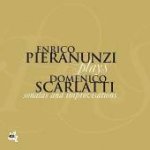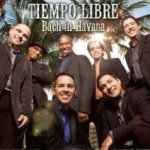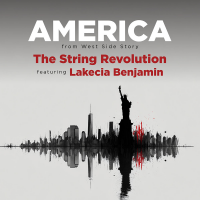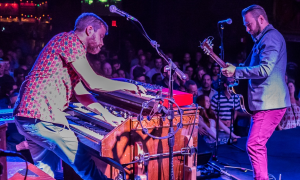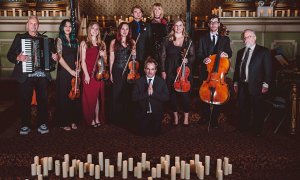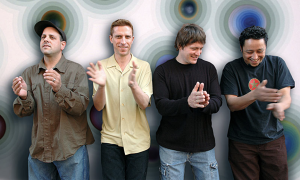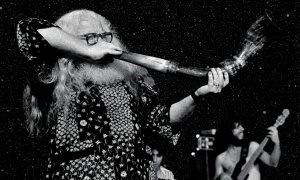Home » Jazz Articles » From the Inside Out » World-ly, and Otherworldly, Beats From the Inside Out
World-ly, and Otherworldly, Beats From the Inside Out
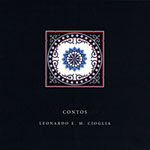 Leonardo E. M. Cioglia
Leonardo E. M. Cioglia Contos
Quizamba Music
2008
The following words probably do Brazilian bassist, composer and bandleader Leonardo E. M. Cioglia no favors, because it lays the weighty burden of expectation upon him and his group of young musicians. But no other words say precisely this: Contos showcases an acoustic jazz ensemble that so deftly features each individual voice, while naturally integrating each voice into an organic ensemble sound, that Contos continually evokes the legendary Gary Burton-Chick Corea-Pat Metheny meeting of the acoustic Like Minds (Concord, 1998).
As Contos' bassist, Cioglia is more felt than heard. He does not solo, not even once. His bass bubbles up through the rhythmic crevices of "Planalto Central," then simmers back down into the groove. He aggressively moves "Filhos Do Pequi" through the irresistible propulsion of Latin jazz, while Aaron Goldberg double-pumps a colorful and lusty piano solo and saxophonist John Ellis breathes dragon fire on sax; the soloists meanwhile churn atop a rhythmic undertow that conjures the mystical, electric Latin fusion spirit of Return to Forever.
As composer and bandleader, Cioglia allows Ellis and guitarist Mike Moreno to dominate the solo space along with Stefon Harris, whose crystalline vibes ring through six tunes. Moreno consistently displays his grasp of the pastoral eloquence—and more importantly, the sheer beauty—of Metheny's guitar approach. Shining like a beacon through the opening title track, tempering "Santa Maria" with soft clouds of melancholy chords, and coupling with sax to create a single, singing voice in "Aroma de Mel," Moreno sounds simply brilliant throughout.
Contos also explores the native music and jazz of Brazil with familiarity and wonder. Harris' vibes lead the soft, reflectively sad melody of "Desfiladeiro de Nuvens" while drummer Antonio Sanchez and Cioglia ebb and flow through its supple Brazilian rhythm. The light melody of "Lençois de Areia" dances on Harris' vibes, shooting sparks off of Moreno's guitar to ignite a smoldering Brazilian fire. Contos resonates with beautiful proof that music need not always be played very loud or fast to be intense.
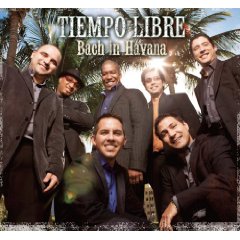 Tiempo Libre
Tiempo Libre
Bach in Havana
Sony Classical
2009
This title provides a pun on the enclosed concept, through which Tiempo Libre, led by pianist and co-producer Jorge Gomez, connects the rhythms and melodies of Afro-Cuban and Latin jazz with the venerated melodies and harmonies of Johann Sebastian Bach. "What's interesting to me is that we revere Bach for his musical genius," explains Gomez. "But the fact that he was composing works for his contemporaries as a "popular" artist while also creating deeply religious compositions, and that he was fascinated by dance rhythms, makes him an even more powerful inspiration for me."
Bach in Havana celebrates genius, melodic or rhythmic, in every corner you look. The opening "Tu Conga Bach" cooks up a hot polyrhythmic conga from its first percussion flash fire. The horns and Gomez's piano create a rhythmic undertow by tossing the melody of "Fuga" (based on Sonata in D Minor, BVW.964) back and forth, like cresting ocean waves.
It's hard to convey how "Minuet in G," this Latin adornment of one of Bach's most famous and honored melodies, sounds both profoundly respectful and yet so different. Laying out piano notes like spreading a plush carpet before the ensemble, Gomez transforms the 3/4 minuet standard time into a feverish, compelling 4/4 guanganco that leaps and bounds through a musical kaleidoscope of vocals, congas, trumpet and saxophone.
Percussion and piano merge into a single voice in "Clave in C Minor" (Prelude No. 2 in C Minor), an intensely dynamic whirl of melody made indistinguishable from rhythm that grows even more powerful when the horns jump shotgun on this same groove.
It culminates with the genuinely sacred music of "Kyrie" (Mass in B Minor), which opens with a vocal choir and strings in a reverential mood unbroken when the percussion, piano, and other instruments join the procession. Gomez's piano part is breathtakingly gorgeous, distilling Cuban passion and romantic classicism into one single essence.
Bach in Havana is so good, so expertly conceived and executed, that it's almost ridiculous.
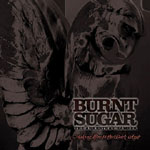 Burnt Sugar the Arkestra Chamber
Burnt Sugar the Arkestra Chamber
Making Love to the Dark Ages
LiveWired Music
2009
Composer Greg Tate leads Burnt Sugar the Arkestra Chamber through melodic and harmonic structures, using a unique repertoire of physical gestures and expressions known not as conducting but as conduction.
Tate christened this ensemble to honor the communal exploratory nature of Sun Ra's Arkestra and the Wu Tang Clan's 36 Chambers: "I wanted to conflate those two mystical generations. Both are in the tradition of mystic composers. Their sound comes from these ideas about science and art and philosophy and spirituality. As a listener to both of them, you feel like the metaphysics are as important as the music; they're kind of interwoven, and I wanted to allude to both of them."
As can be surmised from Tate's explanation, Dark Ages is a sprawling, audacious survey of not only jazz (Sun Ra) and pop (Wu Tang) but of blues, gospel, pretty much every corner of the Afro-American musical spectrum, within song titles as evocative as the music they represent.
"Thorazine/81"—inscrutably co-credited to Tate, Miles Davis and Ron Carter—comes closest to one of Ra's (in)famous interstellar overdrives: While multiple soloists (including a wordless vocalist) simultaneously wail the blues, its repeating rhythm riff seems to just pound the body, then reach critical mass, explode, and then to simply fall apart. It ends in whispered acoustic piano and other instruments, as if Tate's living, breathing ensemble needed to catch its living breath.
"Chains and Water (A, B, C)" opens as a duet between a female voice and harmonica, both wailing the blues ("I never cottoned to no slavery" is a great opening line whose time seems long overdue) but ultimately passes through twenty different musicians. The rhythm session shuffles in to expand the rhythm, then other instruments expand the sound, which culminates in Rene Akan's "Part B" screaming jazz-rock electric guitar solo, then sort of wobbles, and then gets straightened out by old-school, upright walking bass and drums.
For those wondering: Tate might not be mining the most original sound, but it's a pleasure to report that Dark Ages sounds only remotely like Miles Davis' (in)famous electric ensembles exactly one time—when Lewis "Flip" Barnes' electric trumpet comes ghosting in and out of the title track "Part A"—and even this sonic similarity lasts only a few measures. The rest of that title track, as well as the rest of Dark Ages, sounds like many things, and "original" stands chief among them.
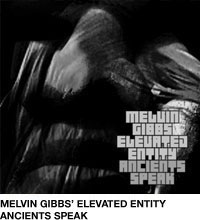 Melvin Gibbs' Elevated Entity
Melvin Gibbs' Elevated Entity
Ancients Speak
LiveWired Music
2009
Bassist/composer/producer Melvin Gibbs is best-known among jazz fans for his run with the Ronald Shannon Jackson Decoding Society and among rock fans as bassist for what most devotees consider the best version of The Henry Rollins Band. Now leading his own band, Gibbs explores "the Black Atlantic continuum" that runs from Harlem and NYC in North America through the American south, down through the Caribbean and into Brazil, on Ancients Speak. "It's the randomness of the explosive situation, how this original bunch of Africans ended up in the Americas," he explains. "I wanted to connect the different roots, reconnect the family."
To start, Gibbs and co-producer Arto Lindsay first made hours of field recordings throughout this African Diaspora, then into this source material incorporated African musical forms both ancient and modern—gospel, blues, Hendrix, AfroBeat, etc. They brought two pretty hotshot guitarists onboard: Pete Cosey (from several Miles Davis electric bands and an original member of Earth Wind & Fire) and Blackbyrd McKnight from Parliament-Funkadelic. Then they cut-and-paste everything together using hip hop production techniques.
The opener is the title track on merit: A solitary bass drum keeps the beat that knits together chants in English, other languages, then American rap, all awash in pin-balling electronics, and demonstrating Gibbs' impressive ambitions. It's sometimes a bit messy, but it's surprisingly genuine, and it works.
In an instant, "Canto por Odudua" transforms into a raging Saharan sandstorm: Staccato electronic drumbeats riddle the scenery like machine-gun spray, vocal chants blossom from the earth then quickly burn and wilt beneath an unforgiving, blistering sun, while an electric guitar solo rampages through the scenery like a rabid African elephant.
"Son of Shango" repeats this dynamic pattern with one twist. Its pounding bass drum sounds both tribally ancient and futuristic, while its snare drum, vocals and other instruments sound glazed in edgy electronics. But there's a description-defying transition that literally sounds like the band shifts gears to open up the throttle of its breakneck, shrieking electric guitar solo.
"Macumba" is no less audacious but this Gibbs gang pulls it off. While the vocalists trade chants and freestyle rapping, the rhythm section shifts the underlying beats from African funk to American hip-hop funk to Euro breakbeat funk, anything and everything just so long as it keeps grooving. It's good that Gibbs learned not only how to listen but how to translate into modern dialects when Ancients Speak.
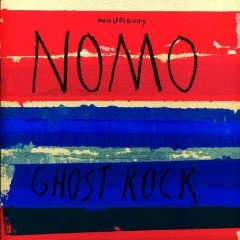 NOMO
NOMO
Ghost Rock
Ubiquity
2008
The initial sound you hear on the opening "Brainwave" offers your first insight into the music of NOMO—the sound of composer, multi-instrumentalist and bandleader Elliot Bergman "playing" an actual brainwave monitor. It's an important clue: NOMO finds music where other people find noise.
Ghost Rock is not an easy listen. It is inventive, challenging, and rewarding, and very often like an onion—each song grows through many layers, and they can be pungent enough to bring tears to your ears. But it is not easy.
"All the Stars" shines with icy cool. Electric kalimba (NOMO's trademark sound) and percussion seem to breed and spawn in the rhythm bed, while Bergman's saxophone and other saxophones and horns build and release melodic tension. This rhythm track is the essential sound of NOMO—know this sound, and you know NOMO. More than this, "All the Stars" wordlessly explains how NOMO's modern electronic jazz extends the continuum from foundational late '70s jazz experimenters such as Miles Davis and progressive rockers like King Crimson, Can, and Gongzilla.
Ensemble and individual saxophones from Bergman, Daniel Bennett, and Joey Dosik, dominate several tunes, in particular "Round the Way," "Rings," and "My Dear," which like a suite whiz past as a collective blur. "Rings" is a complete saxophone and rhythmic raveup, where neither the hard-charging horn section nor the rhythm section concedes any ground. "My Dear" locks into step with a barbed guitar hook, which pins it down to be scorched by saxophone solo after solo.
Later, "Last Beat" sounds more like something titled "Postcards from the Howling Saxophone Hurricane," although with a funky rhythm guitar hook that lends a '70s retro feeling, like the chase scene in a superfly cop action drama, and a liberating saxophone/percussion breakout jam.
"Nova" gently rocks its coda, but most of the rest of Ghost Rock is almost too thick and dense, almost too much. It IS almost too much... but it's just enough.
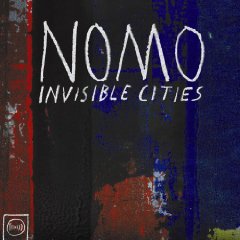 NOMO
NOMO
Invisible Cities
Ubiquity
2009
Invisible Cities is NOMO's companion piece to Ghost Rock, comprising music recorded during Ghost's recording sessions and subsequent, supporting live performances. Cities uses many of the same musicians, structures, and approaches, but Bergman and NOMO seem to focus more on pulling traditional jazz sounds into, and pushing the boundaries of electronic rock out of, its swirling dervish mix.
For example, nothing on Ghost Rock sounds like Invisible Cities' opening, title track. Powered by the dual engines of a rhythm section with electric kalimba, and a horn section that majestically trumpets a cutting riff from the Oliver Nelson or Cannonball Adderley blues school, it almost immediately reaches warp speed.
There's also nothing on Rock like the New Orleans ensemble horn sound that calls to order "Patterns," although "rock" does describe what drummer Dan Piccolo and bassist Jamie Register do to mash up its beat, while the saxophone soloists blaze through repeated choruses with screaming electricity.
Invisible further demonstrates NOMO's ability to put music together in different ways. A guitar or keyboard riff first serves shrill counterpoint to "Ma," but then becomes the hook from which the horns and vocals take their cue (Bergman uses very cool kaleidoscopic production touches here, too). "Banners on High" seems to come together from all different styles and corners—churning staccato drums, squalling electronics, gloriously resounding horns—through some sort of collective musical magnetism.
Like Ghost, some Invisible songs can sound kind of difficult. "Bumbo" (credited to underground musical legend Moondog) opens in a free-spirited gallop but then its rhythm begins to throb like a toothache while several saxophonists begin to wail all at once, and its edge grows harsh; Bergman's production makes the sound both exciting and bleak.
"Elijah" sounds more apocalyptic than prophetic, a spacious dirge harmonized through a seething sea of roiling drums and electronics, the sound of the beginning of the end. It leads into the concluding "Nocturne," a tribal, percussion and vocal serpentine dance that surely makes Sun Ra smile. Bergman's wooden flute, leading several floating phases in "Crescent," provides another lighter sounding respite.
Contos
Tracks: Contos (Do Neco); Santa Maria; Filhos Do Pequi; Aroma De Mel; Planalto Central; Pontos Cardeais; Olhos D'Agua; Desfiladeiro De Nuvens; Lencois De Areia; Cancão Ao Tempo.
Personnel: Leonardo E. M. Cioglia: acoustic bass; John Ellis: tenor saxophone, soprano saxophone, flute, clarinet, bass clarinet; Mike Moreno: electric guitar, acoustic steel string guitar; Stefon Harris: vibraphone, marimba; Aaron Goldberg: acoustic piano; Antonio Sanchez: drums, cymbals.
Bach in Havana
Tracks: Tu Conga Bach (conga); Fuga (Sonata in D Minor, BVW. 964, Fuga-Allegro, cha-cha-cha); Air on a G String (bolero); Clave in C Minor (Prelude No. 2 in C Minor, guaguanco); Gavotte from French Suite No. 5 in G Major (son); Mi Orisha (6/8 bata) (French Suite No. 2 in C Minor French); Minuet in G (guaguanco); Olas de Yemaya (C Major Prelude from WTC Book 1, batá); Baqueto con Bajo (Cello Suite No. 1 in G Major, danzon); Timbach (D Major Prelude, WTC Book 1, timba); Kyrie (Mass in B Minor Mass, bata).
Personnel: Jorge Gomez: Music Director; arranger; keyboards; background vocals; Joaquin "El Kid" Diaz: lead vocals; Leandro González: congas, background vocals; Tebelio "Tony" Fonte: electric bass, background vocals; Cristobal Ferrer Garcia: trumpet; Hilario Bell: percussion, timbales; Luis "Rosca" Beltran Castillo: tenor saxophone; Yosvanny Terry: saxophone; Paquito D'Rivera: saxophone, clarinet.
Making Love to the Dark Ages
Tracks: Chains & Water, Parts A, B & C; Thorazine/81; Love to Tical; Dominata (the gabri ballad); Making Love to the Dark Ages, Parts A & B.
Personnel: Gregory S. Tate: conduction, guitar, laptop; Lisala Beatty: vocals; Jeremiah: vocals; Lewis "Flip" Barnes, Jr.: trumpet; Satch Hoyt: flute, percussion; Matana Roberts: alto saxophone; Petre Radu Scarfaru: tenor saxophone; Mikel Banks: harmonica; Rene Akan: guitar; Vijay Iyer: piano; Bruce Mack: synthesizer; Jason DiMatteo: acoustic bass; Shahzad Ismaily: efx bass; Jared Michael Nickerson: electric bass; Chris Eddleton: drums; Will Martina: cello; Michael Veal: soprano saxophone; Micah Gaugh: alto saxophone; Avram Fefer: alto saxophone; "Moist" Paula Henderson: baritone saxophone; David Smith: trombone; Mikel Banks: freak-a-phone; Ben Tyree: guitar; Trevor Holder: drums; V. Jeffrey Smith: tenor saxophone; W-Myles Reilly: piano; Justice Dilla X: vocals, piano; Derrin Maxwell: vocals; Mazz Swift: violin; Vernon Reid: guitar; Andre Lasalle: guitar; Meret Koehler: drums.
Ancients Speak
Tracks: Ancients Speak; Sometimes; Canto por Odudua; Represent Do Rio; Mojuba; Sun of Shango; Eu Cant En Yoruba; Macumba; Summer Breeze; Os Aguas/The Waters.
Personnel: Melvin Gibbs: bass, keyboards, programming; Craig Taborn: keyboards; John Medeski: keyboards; Mark Batson: keyboards; James Hurt: keyboards; Pete Cosey: guitar; Blackbyrd McKnight: guitar; Afoxe Filhos do Korin Efan: vocals, percussion; Pedrito Martinez: vocals; Amayo: vocals; Totonho: vocals; Felix Sanabria: percussion; Abdou Mboup: percussion; Bloco Afro do Pirja: percussion; Tarreon Gully: drums; JT Lewis: drums; Chason Walker: rap; Ruben: rap; B-Negão: rap; Ron Blake: horns; Casey Benjamin: horns; Graham Hayes: horns; Micah Gaugh: horns.
Ghost Rock
Tracks: Brainwave; All the Stars; Round the Way; Rings; My Dear; Ghost Rock; Last Beat; Three Shades; Nova.
Personnel: Josh Abrams: bass; Dan Bennett: clarinet (contrabass), baritone and tenor saxophone; Elliot Bergman: bass, clarinet, clarinet (bass), tenor saxophone; Maracas Mbira: Fender Rhodes, Arp 2600, electric kalimba, Prophet 5, SH-101; Warn Defever: guitar; Joey Dosik: alto saxophone; Hamid Drake: percussion, drums, bata; Erik Hall: guitar, drums, tambourine, bells, shaker, roto toms, log drums; Chilali Hugo: harp; Quin Kirchner: conga; Jason Murdy: percussion, conga, bells; Dan Piccolo: drums; Ingrid Racine: trumpet; Jamie Register: bass; Adam Rudolph: congas; Justin Walter: trumpet.
Invisible Cities
Tracks: Invisible Cities; Bumbo; Waiting; Crescent; Patterns; Ma; Banners on High; Elijah; Nocturne.
Personnel: Dan Bennett: baritone saxophone; Elliot Bergman: synthesizer, arranger, bass clarinet, tenor saxophone, vocals, Fender Rhodes, bamboo flute, ARP 2600, electric kalimba, Prophet 5; Natalie Bergman: vocals; Warn Defever: percussion, electric kalimba; Joey Dosik: alto saxophone; Erik Hall: guitar, percussion, conga, tambourine, vocals, kalimba, Fender Rhodes, temple blocks, log drums, electric kalimba; Quin Kirchner: percussion, congas, drums, electric kalimba; Jason Murdy: congas, bells; Dan Piccolo: drums; Ingrid Racine: trumpet; Jamie Register: bass, vocals; Hitoko Sakai: percussion, electric kalimba; Justin Walter: trumpet, vocals, EWI.
Tags
PREVIOUS / NEXT
Support All About Jazz
 All About Jazz has been a pillar of jazz since 1995, championing it as an art form and, more importantly, supporting the musicians who make it. Our enduring commitment has made "AAJ" one of the most culturally important websites of its kind, read by hundreds of thousands of fans, musicians and industry figures every month.
All About Jazz has been a pillar of jazz since 1995, championing it as an art form and, more importantly, supporting the musicians who make it. Our enduring commitment has made "AAJ" one of the most culturally important websites of its kind, read by hundreds of thousands of fans, musicians and industry figures every month.


